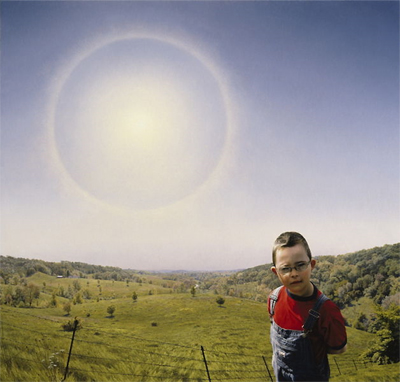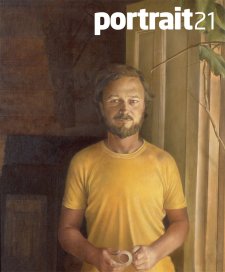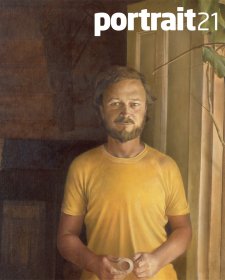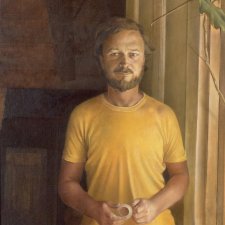The Director of the American National Portrait Gallery, Marc Pachter, could hardly wipe the smile from his face. After more than six years of renovation, the Washington National Portrait Gallery has emerged like Sleeping Beauty into a beautiful and resplendent museum.
What’s more, the local neighbourhood has transformed from ugly duckling to hot property. Once a derelict and seedy area, it is now full of bustling restaurants and hip bars.
The National Portrait Gallery shares what once was referred to as ‘the noblest of Washington buildings’ with the Smithsonian American Art Museum. One of the finest examples of Greek Revival architecture in the USA, the building was begun in 1836 and completed in 1868 with proportions modelled on the Parthenon in Athens. Originally the Patent Office, it is the third-oldest public building in Washington DC after the Capitol and the White House. It was the site of Abraham Lincoln’s second inaugural ball.
With the lengthy title of the Donald W Reynolds Center for American Art and Portraiture, named in honour of a generous gift from the D W Reynolds Foundation, the building now includes special purpose facilities such as the Lunder Conservation Center where the public can observe conservators at work, and the Luce Foundation Center for American Art, a visible art storage and study centre securely displaying more than 3,300 objects from the American Art Museum’s permanent collection.
The Robert and Arlene Kogod Courtyard with an undulating glass enclosure by renowned architect Norman Foster, is set to open in late 2007.
The American National Portrait Gallery describes its mission as ‘to tell the story of America through the individuals who have built our national culture. Through the visual arts, the performing arts and new media the Gallery portrays poets and presidents, visionaries and villains, actors and activists who speak our history. It is where the arts keep us in the company of remarkable Americans.’ Apart from the architectural features like the sandstone Doric columns, the beautifully decorated staircases and the window panes – each internally glazed with traditionally produced Polish glass that gives a dimpled view of outside – it is the bold use of colour that attracts your attention. Rooms of chartreuse, plum and coffee work wonderfully as the backdrop to the stares and glances of the various characters on show. Tom Wolfe dressed in his characteristic white suit positively glows from the lime yellow chartreuse walls.
An ambitious exhibitions program at the National Portrait Gallery currently includes Americans Now - people who are making history in sports, entertainment, politics and other fields of endeavour today - and Portraiture Now - an ongoing series featuring contemporary artists who explore portraiture with imagination and skill. American Origins is a hall that documents the history of the United States through the people who built the nation, from pre Colonial days, the Revolutionary War, the Civil War through to the Gilded Age. America’s Presidents is the nation’s only complete collection of presidential portraits outside the White House. The Presidency and the Cold War explores how US Presidents shaped and intervened in the events of our age - beginning with Franklin Roosevelt’s meeting with Joseph Stalin and Winston Churchill at Yalta and ending with the collapse of the Berlin Wall. Twentieth Century Americans showcases the major cultural, scientific and political figures of the century, from the reform movements of the first two decades to the movement for social justice and civil rights of the 1950s, 1960s and 1970s, from the Great Depression to the Vietnam era and beyond. Bravo presents individuals who have bought the performing arts to life, while Champions salutes the American sports figures whose impact has extended beyond the athletic realm and made them part of the larger story of the nation. And there is more: other current exhibitions include Eye Contact: Modern American Portrait Drawing, Gifts to the Nation and One Life: Walt Whitman, a Kosmos.
The President’s Gallery of the Washington National Portrait Gallery is truly spectacular. Within that collection the Lansdowne portrait of George Washington by Gilbert Stuart hangs in the most appropriate location at the entrance. The portrait of JFK by Elaine de Kooning has the something of the relaxed informality as the Clifton Pugh portrait of Gough Whitlam at Parliament House. Richard Nixon is seen peeping over a very prominent Norman Rockwell signature, whilst an unflattering portrait of Bill Clinton has him pointing to parts of his anatomy that have caused him grief in the past!
The NPG’s week of openings and celebrations culminated with the inaugural Outwin Boochever Prize, announced on the Friday evening of the opening week. Outwin Boochever (Boo-cheev-er) lived in Europe for thirty years raising four children and supporting her husband’s career in the US Foreign Service. Gregarious and curious, she took pleasure in learning about the arts and culture of the countries in which she lived, and she and her husband were enthusiastic art collectors. In 1979 the Boochevers moved to Washington DC where Mrs Boochever took on a variety of volunteer activities. She was, however, most passionate about her work as a voluntary guide at the NPG. Mrs Boochever saw the endowment of a portrait competition at the NPG as a way to benefit artists directly. Her knowledge of the portrait galleries of England and Australia allowed her to understand the role competitions play in encouraging portraiture … and encourage portraits she certainly has. The prize is not an acquisitive prize and this year was open to both painting and sculpture. Most artists sent images using the online application process. With over 4,000 entries - from every state in the USA - the jury of experts selected 51 portraits to be exhibited in the inaugural prize. Unlike Archibald entries, which must depict well-known sitters, the Outwin Boochever Prize allows for portraits of everyday Americans. In the painting Sam and the Perfect World the inaugural winner, David Lenz, portrayed his son, Sam, who has Down’s syndrome, at the family’s rural Wisconsin property. ‘This is the most personal painting I’ve ever done’, Lenz said. Lenz’s prize comprised $US25,000 and a commission to paint a work for the NPG.
I liked the double portrait, Mom and Dad, by Steve DeFrank of New York City. For a conservative east coast American audience it is a brave work indeed. Made from hand-dyed Lite Brite pegs mounted in a light box this glowing baby-boomer couple poses without a stitch of clothing, their tan lines suggesting that they are not regular nudists. This work accords with the comments of a still-beaming Marc Pachter following the judging of the prize. ‘Many of the subjects were parents, spouses, lovers and children and consequently many of the portraits had an intimate feeling…overall I see an emphasis on the humane’.
Having had 18,000 visitors on the opening weekend, the National Portrait Gallery with opening hours 11.30am - 7.00pm is already a popular destination, sitting extremely well in its lively neighbourhood. Extending its already well-established role, the NPG has been warmly welcomed back into the cultural scene of Washington DC as a vital and newly invigorated national institution.














